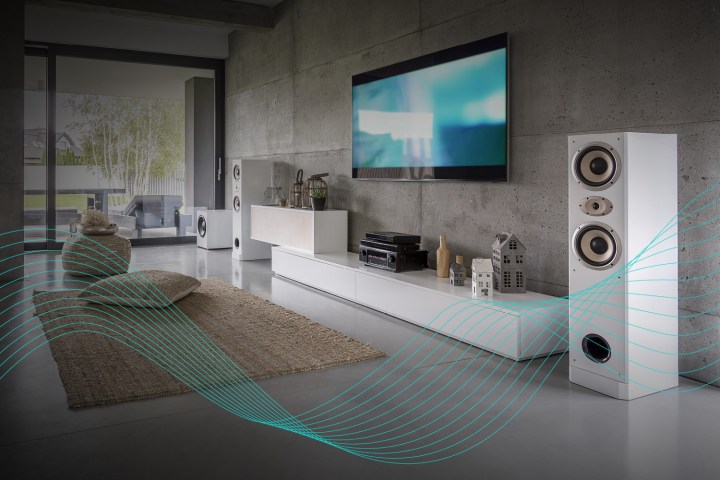You’ve got questions, I’ve got answers! This is the third installment of our series where I tackle the excellent questions from the Digital Trends community. On this episode of You Asked: Will I review the Hisense UX TV? Why don’t we test TV temperature? Do I really just want to be Linus or Marques? Subwoofers for Apple Homepods, and much more.
Let’s dive in.
Hisense UX

@AbiolaOlajide-ue5hh asks: “When are you going to review the UX Hisense?”
When this question was originally posted, my answer would have been “possibly never.” That’s because when last I spoke to Hisense, it didn’t think it was going to be able to send out review samples. So, I suggested Hisense consider flying reviewers in for an event where everyone could get a crack at measuring and evaluating the TV. I didn’t hear back about that, so I was beginning to think maybe I wouldn’t get the chance to review this TV.
But, just a few days ago, I learned that a Hisense UX is making its way here, and I could not be more excited. So, to answer your question — give me a couple of weeks! We have a lot of TVs here to review, but that one is a priority, so I’ll get to it ASAP.
TV temperatures

Next up, @AP-hn8wd asks: Hi, Caleb! With TVs getting larger, why don’t TV reviewers start reviewing heat output (temperature-wise) on a TV? I’ve heard some owners of certain TVs 65 inches and larger [say the TVs] make their living rooms warm, especially during the summer (could be smaller living rooms in apartments). Even smaller TVs of 55 inches or smaller can warm a small bedroom after an hour or so when gaming.
Well, I’m betting you were asking why don’t TV reviewers test a TV’s heat output rhetorically. But just in case you really were wondering why it isn’t commonly done, my guess would be it’s because it’s more work than you might think — at least to get things going — and because it would be tough to make the results meaningful. But I’m up to the challenge, and I’m willing to give it a try. And besides that, I’ve been looking for just one more reason to get a digital laser infrared thermometer gun, and you just gave it to me, so thank you!
The difficulty in getting this set up is that I’ll need to create some testing parameters so that we can get reliable results. And from there, we need a series of controls. So, off the top of my head, I’m thinking we’ll want to leave the TV on for, say, an hour, playing a predetermined mix of content that we put on every TV to make sure the stress we put on each TV is consistent. We have to make sure that the temperature in the room is always the same because heat buildup could exponentially increase based on how warm a room is to begin with. And, I think we can’t test while the AC or heater is blowing, or too soon after the AC/heater has been on, so we’ll want to standardize how long after the HVAC has shut off that we conduct the test. Then we need to measure both the front and the back of the TV, and I suppose take an average from those two readings. Complicating matters, I’d have to figure out where on the back of the TV to take a reading, because it would be unfair to measure right behind the power supply on one TV and not on another.
See? There’s a lot to it. But let’s say we figure that all out. How do we make the results meaningful? I don’t have the answer to that — yet.
I test mostly 65-inch TVs, so I can just make a rule that I only measure the temperature of 65-inch TVs since I only get 77-, 85-, and 90-plus-inch TVs occasionally and couldn’t really build up enough data on those large sizes to make comparisons such that I could conclude that one TV runs hot and another runs cooler. My other concern is that I don’t know how knowing hot a 65-inch variant of a certain model gets would tell us anything about how hot a 55-inch version might get. Or an 85-inch version. You might think it is reasonable to suspect a smaller TV would not get quite as hot, while a larger TV would get hotter. But I don’t have any data to prove that the heat generation is going to be predictably linear.
It’s just not fair for me to point and shoot a temperature gun at a TV and say, “It’s this hot,” without putting that into context, and to have context, I need a big pool of data. But, I can’t get that data unless I start collecting, so … I promise you this: I’ll get that temperature gun because — fun! And I’ll look into it. Check in with me in about … three months, and I’ll let you know where I’m at. Does that seem fair? Thanks for the question and suggestion!
I’m just Caleb

@channelmames comments: You want to be Linus or Marques sooooooooo bad.
No. Nope. Not going anywhere near that one right now. Whoooo, no.
Homepods subs

@augustya7543 asks: I am looking for a subwoofer to use with my OG Homepods to have more bass. Which is the subwoofer that you can suggest that has a tiny footprint and is compact and portable?
To the best of my understanding, there is no way to add a subwoofer to Apple HomePods speakers, either the OG version or the latest gen. So if you really need more bass in your life — and who doesn’t? — then I think you should look at replacing the HomePods with something else or adding a system that satisfies your music/movie listening desires. I’m sorry I don’t have better news for you.
Room EQ

@patrickmoodley6619 wrote: What are your thoughts on the various Room EQs in AVRs? Comparison between Dirac, Audessey, Ypao. Is it all much of a muchness or is there some benefit in one over the other?
I am super glad you asked this question, but I’m afraid I don’t have a super helpful answer for you … yet. I personally think one of the most admirable things someone can do as a reviewer is admit when they don’t have adequate information to make a call or share an opinion on something. And that’s where I’m at with Room EQ right now. I haven’t tested very many AVRs lately, and certainly not enough of them to make comparisons. But, I intend to change that. Now that I have a new studio space, I can leave a speaker system set up all the time and just swap in AVRs as well as amplifiers, and dig into the audio space a little more. So hopefully, I’ll be able to weigh in on the state of Auto-EQ programs soon.
I will say this, though: I have spent a lot of time poo-pooing auto setup wizards and room EQ programs because when I did work with AVRs a lot, I found that they did more harm than good when it came to the sound I got from them. I recall them doing a good job of determining speaker distance, so they were good at time alignment, but I was never pleased with the crossover points they picked for each speaker. I also didn’t like the way the EQ sounded.
I have this theory — not the most popular one — that trying to fix what your room does to your speakers’ sound by changing the sound of the speaker is just not a great way to go about doing things. I understand the principle, I just haven’t enjoyed the results — in the past. It’s time to test things again. I hear Dirac can do some good stuff and I want to hear it for myself.
Optical audio accessibility options

Tony Wagner says: OK, one thing I find very annoying is Optical outputs on TVs that stop working when anything is connected to ARC or eARC. On the Hisense 75U8H, we use the optical to feed the transmitter for hearing aids, but have to remove the connection to the receiver in order to get the hearing aids to work. The ideal would be for the optical to always output unless the mute is on. I know those of us with disabilities get ignored a lot, but maybe if things like this were mentioned more, something would happen. I talked to Hisense tech support and was given the brush-off. Do any of the TVs you have reviewed have working Optical outputs?
So, first of all, Tony, I agree that folks with disabilities deserve some urgency around solutions that help them enjoy the tech they use. And I’m eager to do whatever I can to help that cause.
I have not done much testing to determine which TVs automatically switch audio output to ARC or eARC when connected, but I suspect it is most, if not all, of them, and that probably has to do more with how the chipsets in these TVs are programmed than how a brand like Hisense uses them.
Thanks to Vincent Teoh at HDTVtest, we know that Hisense uses Pentonic SOCs in at least some of its TVs. I suspect that it is part of that system on a chip that causes the optical audio output to get disabled when there is an eARC connection. But I also think that it shouldn’t be too hard to adjust the audio output settings so that there is a default audio output, be that user-selectable, where you say always use optical unless you change it, or last-used, where the last selected audio output is used until you change it. However, the issue of not being able to output to both optical and HDMI may be an inherent limitation. By that I mean, the capabilities of HDMI and optical are different — HDMI supports audio codecs that optical doesn’t, and the audio decoder in the TV needs to adjust depending on what is connected, so I’m not sure we’ll ever see a TV that outputs two different audio streams to both optical and HDMI at the same time.
I do have a suggestion for you to try, though. Consider connecting your hearing aid transceiver to the optical output on your AV receiver, if it has one. It’s possible that the AV receiver is able to transcode audio coming in via HDMI and route it out the optical connection, and if it does, that means you could just turn on the receiver and mute it when you only want to use the hearing aids. It does mean you would have to turn on the receiver pretty much any time you watch TV, though. That’s unless you’re just going to use the TV speakers. I don’t know if that is going to work — there could be copy protection that will prevent it. It’s worth a shot, though.
Editors' Recommendations
- You Asked: Is Amazon hiding the Blu-rays? And where’s the Sony XM6?
- You Asked: QLED and mini-LED burn-in, missing HDR, and Apple TV and HDMI 2.1
- You Asked: Mixing AV brands, the best headphones for TV viewing, and more
- You Asked: tone mapping, bad Blu-ray players, mini-LED vs. microLED, and TCL X955
- You Asked: home theater setup challenges, in-home TV calibration, and is Sony abandoning OLED




